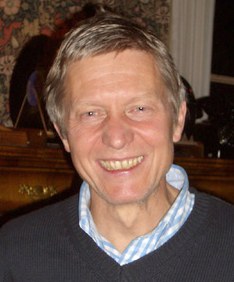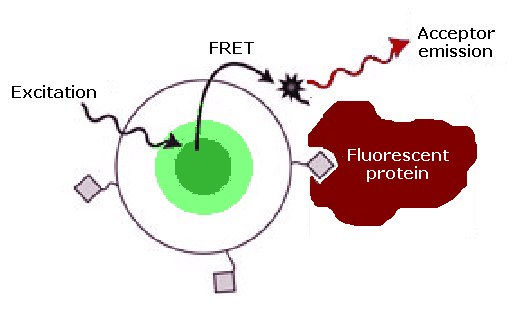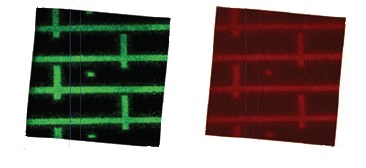Semiconductor nanocrystals that emit light could form the heart of a new type of fluorescent light source for analytical chemistry, diagnostics, and bioanalysis according to Swiss research.
Horst Vogel at the Swiss Federal Institute of Technology in Lausanne (EPFL) took nanocrystals of cadmium selenide which fluoresce with green light. They coated the crystals with a thin protective layer of lipids, which makes them water-soluble and prevents them from fluorescing except under specific conditions. Next, the team added molecular hooks, which, Vogel explains, can latch on only to particular molecular eyes. When the molecular hooks link up with their corresponding eyes, the nanocrystals are free to light up.

Horst Vogel
By choosing the hooks carefully so that they link up with biological molecules of interest (the eyes), the scientists can build a sensor that will light up in the presence of the target molecule. The created a two-dimensional microscopic pattern of the protein streptavidin to act as the eyes in their demonstration and used the vitamin biotin as the hooks on their dormant nanocrystals. Shining ultraviolet light on the systems then makes only those nanocrystals that have hooked up glow green.
The story does not end there, however. By attaching a second hook of nitrilotriacetic acid to the nanocrystals, they can be made to fish out proteins of interest that have been marked with a complementary eye, hexahistidine, and that carry their own red fluorescing unit. This second hook latches on to the target proteins and brings the first hook and eye into close contact. This time when the system is bathed with ultraviolet light, the green photons from the nanocrystals do not get a chance to be emitted instead they are absorbed by the red fluorescent tag on the target protein and their energy excites this unit making it glow red. Only specifically bound proteins are thus made to fluoresce, explains Vogel, such a high sensitivity cannot be attained with conventional light sources.

Making molecules FRET when they recognise each other (Adapted from Wiley-VCH)
Vogel adds that the nanolamps can be incorporated into defined structures relatively easily and with micrometre precision and so could be used to illuminate studies with lab-on-a-chip devices, such as DNA and protein chips.

Fluorescence confocal microscopy reveals the effects of specific binding to the glowing nanocrystals (Adapted from Wiley-VCH)
Further reading
Angew Chem, 2005, 44, 1388-1392
http://dx.doi.org/10.1002/anie.200461491
Suggested searches
nanocrystals
fluorescence
nanotechnology